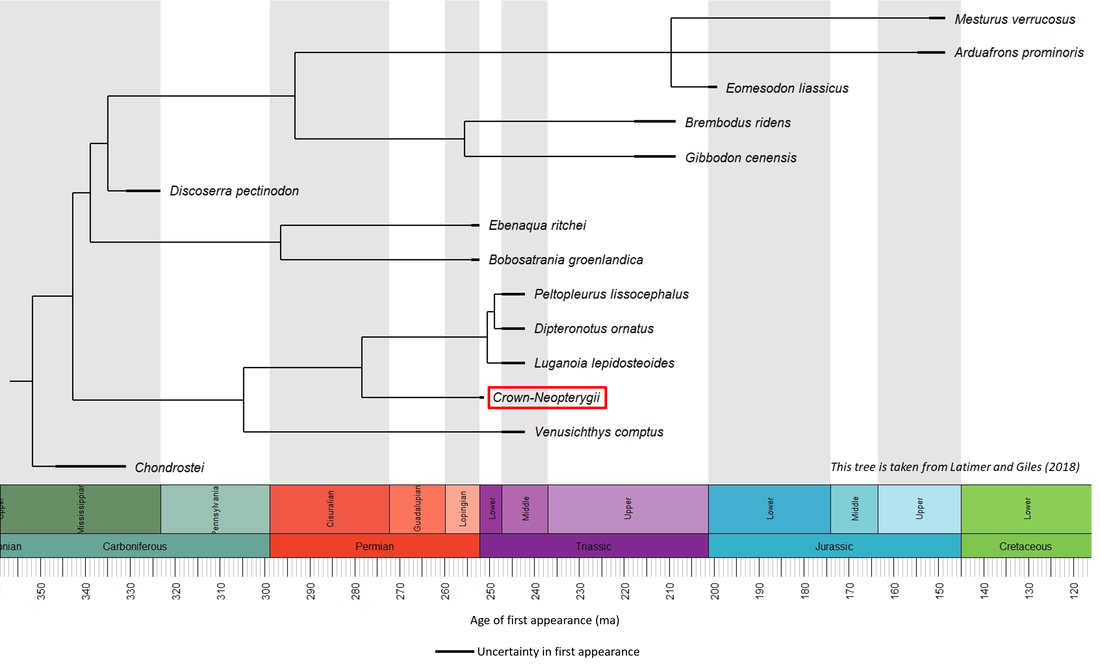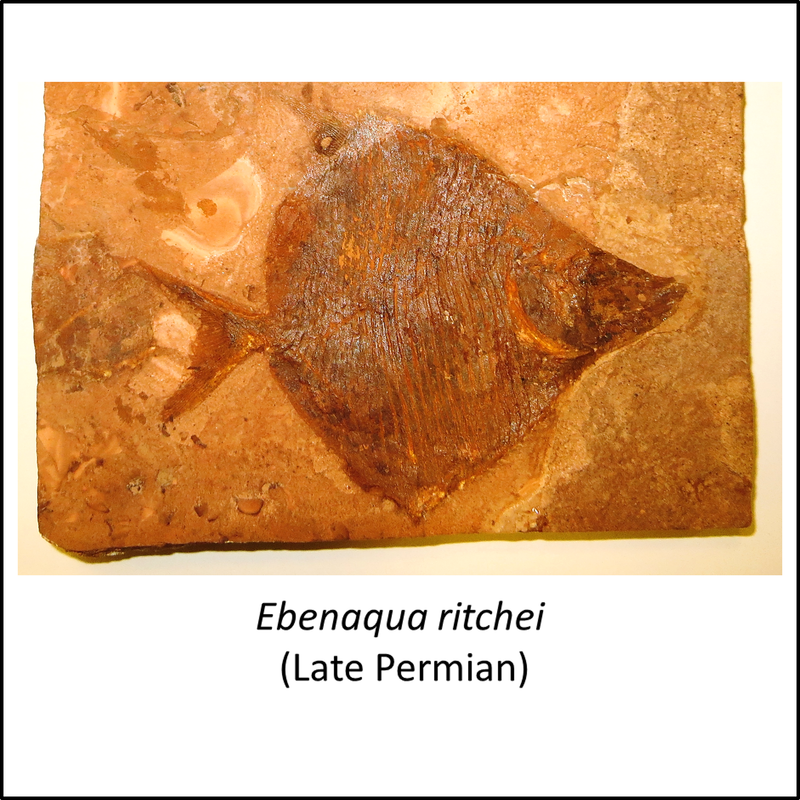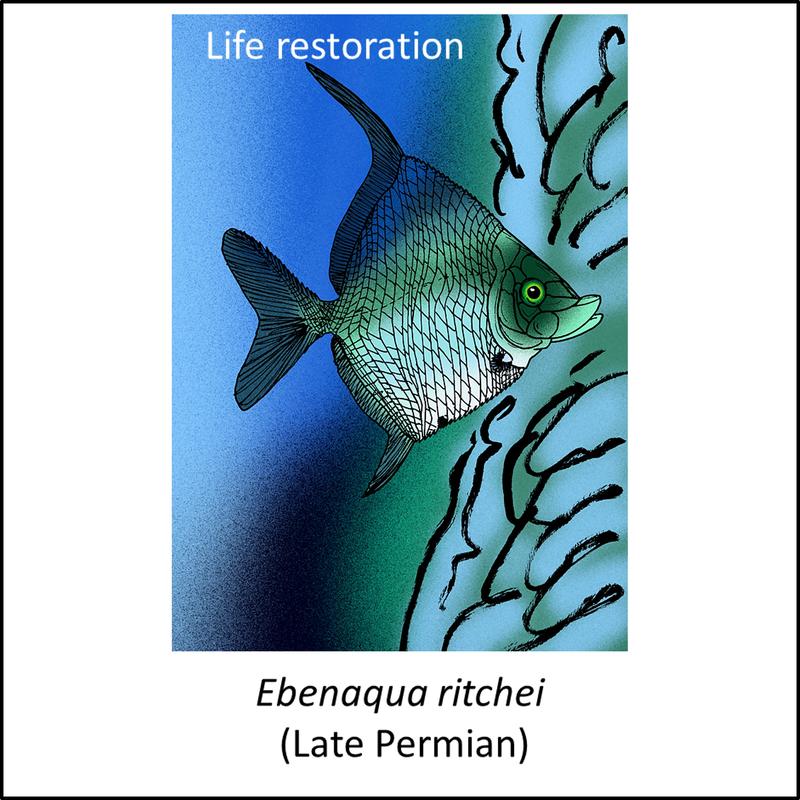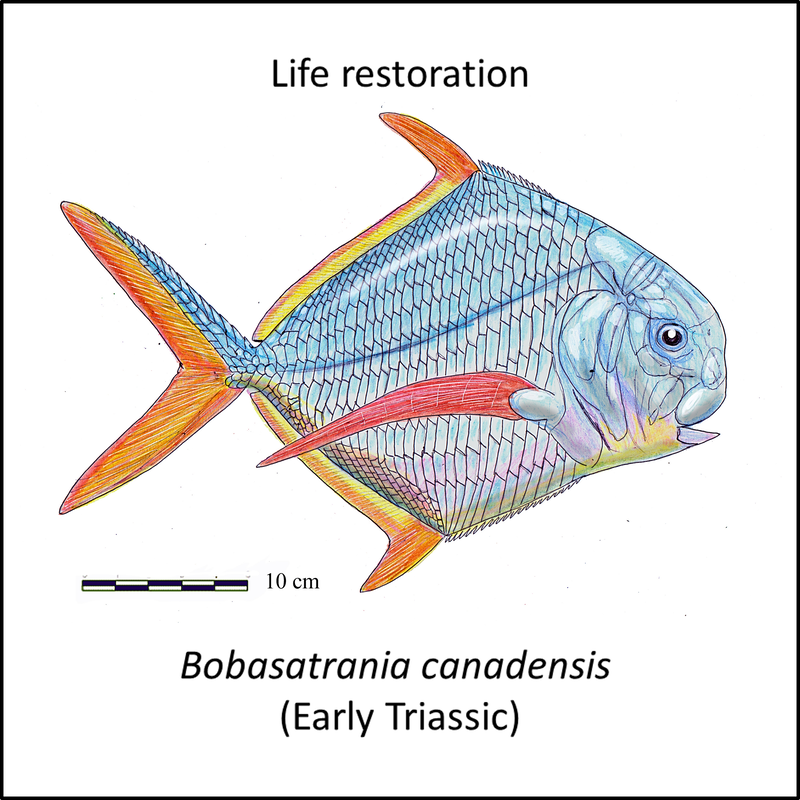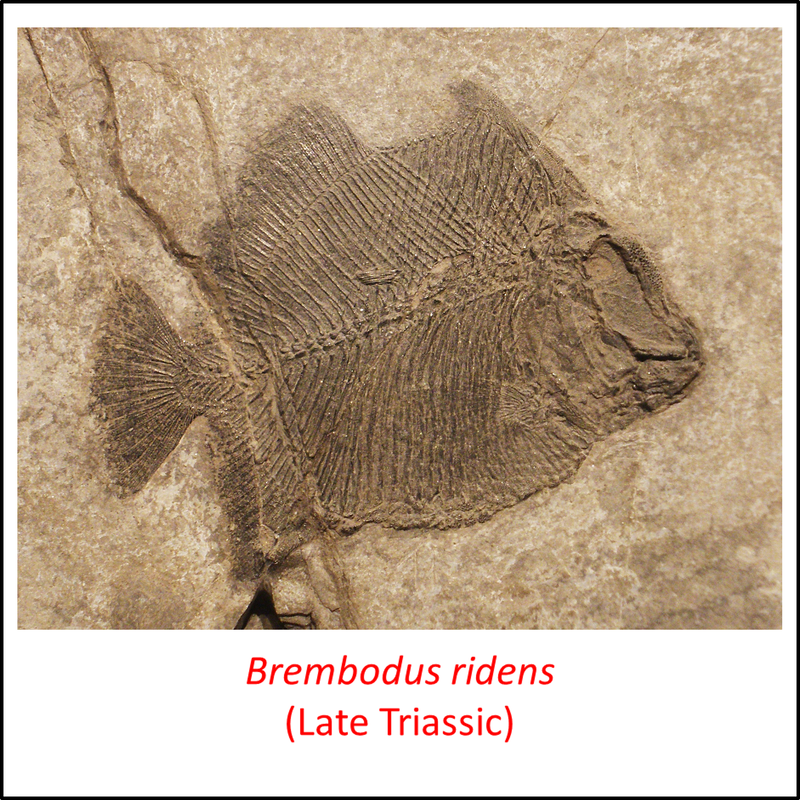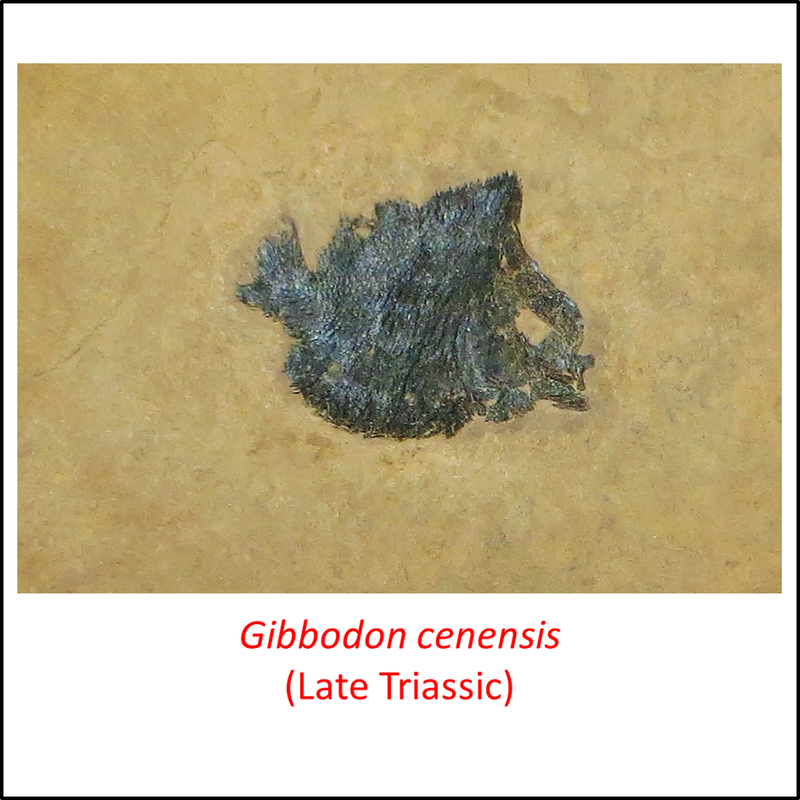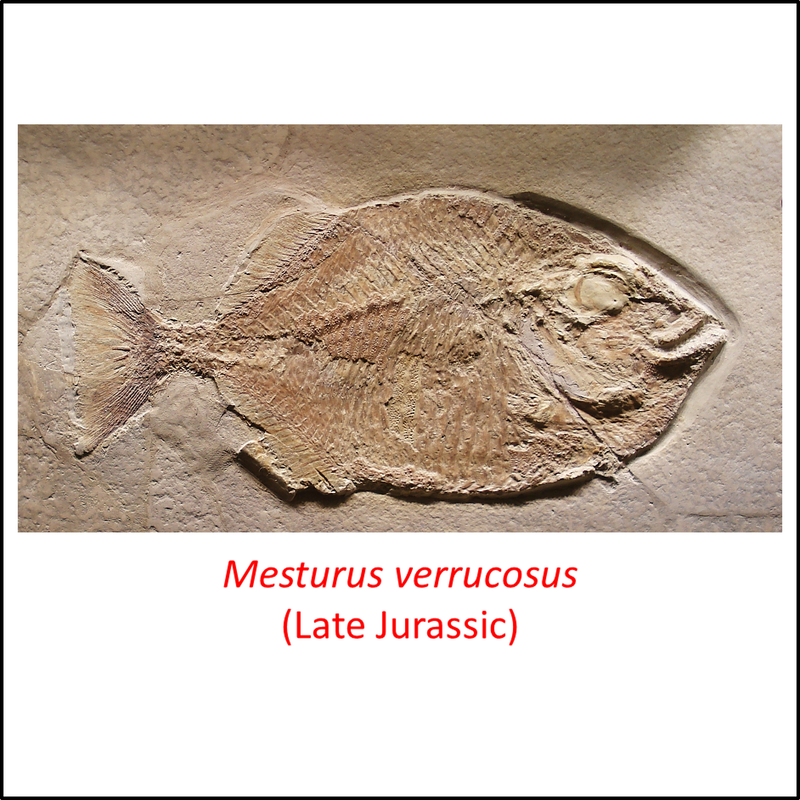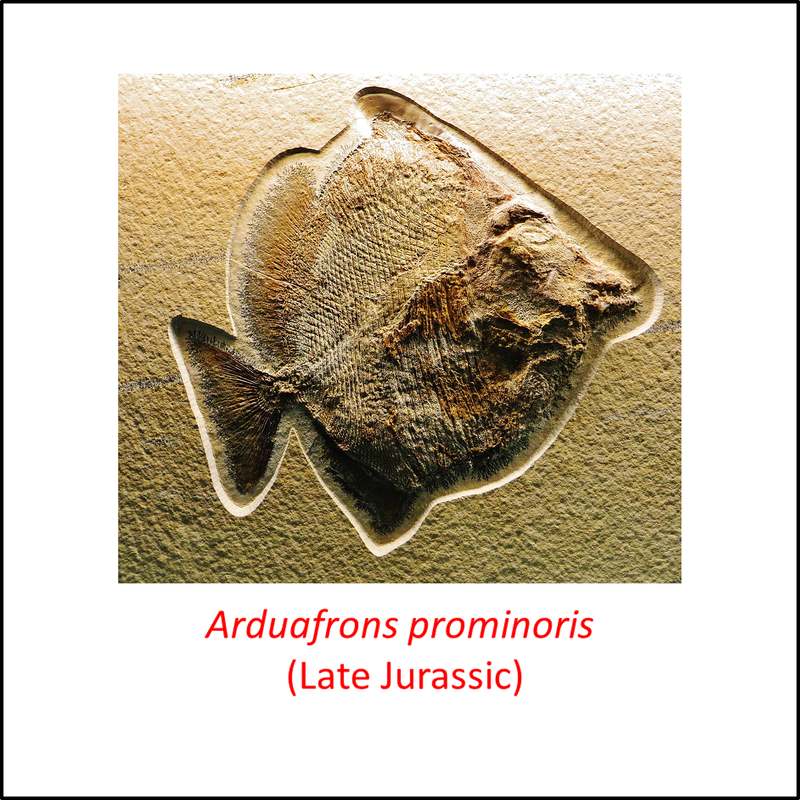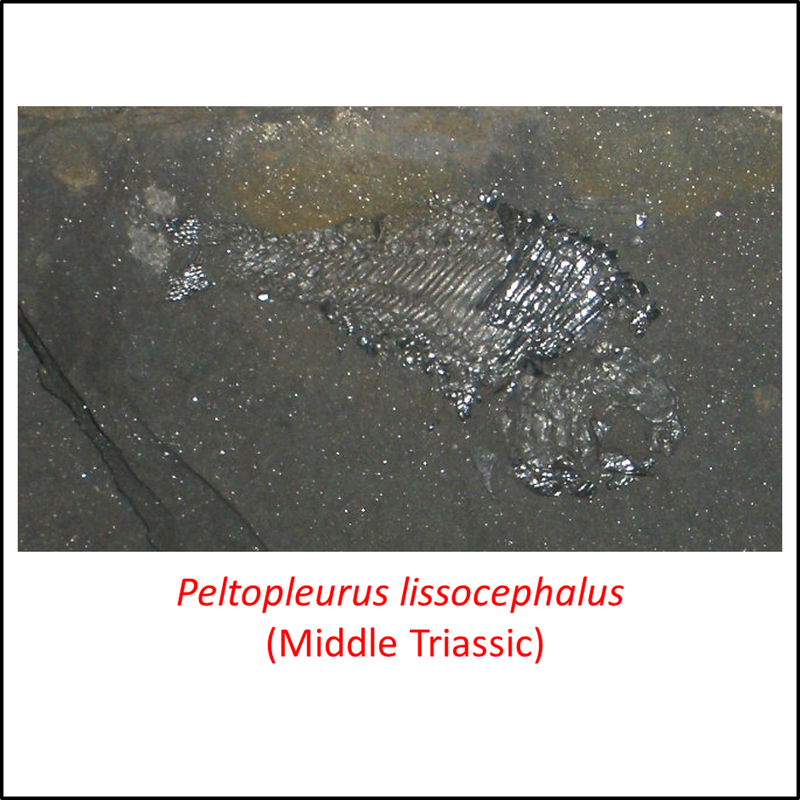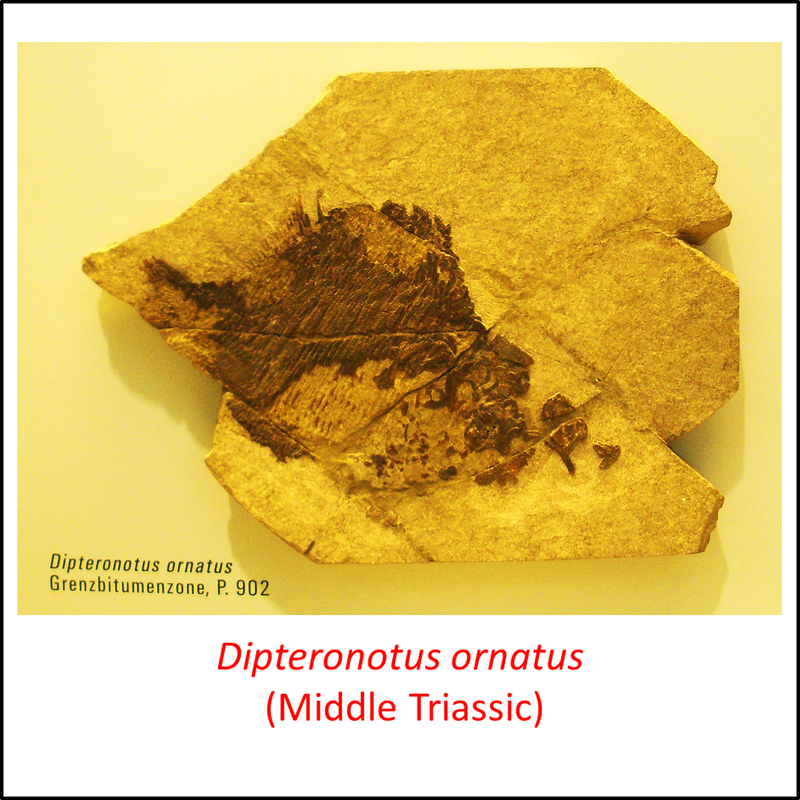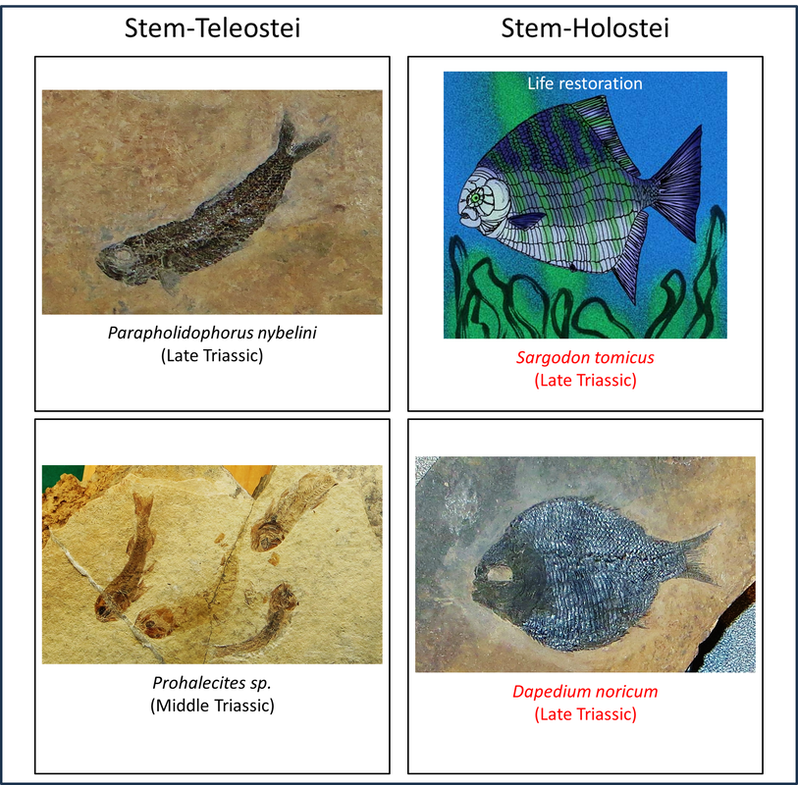This page covers the stem group of the neopterygian fishes (clade Neopterygii, Superclass Actinopterygii). The clade contains over 30,000 species in 4,914 genera and 509 families (Encyclopedia of Life, eol.org/pages/2775792).
The stem-Neopterygii are quite well represented in the fossil record. Their phylogenetic relationships are shown in the time tree below:
The stem-Neopterygii are quite well represented in the fossil record. Their phylogenetic relationships are shown in the time tree below:
Figure 1. Time tree of the stem-Neopterygii
The oldest known member of the stem-Neopterygii is Discoserra pectinodon, described from the Early Carboniferous (Serpukhovian) Bear Gulch Limestone member of the Heath Formation at a location south of Becket, Fergus County, Montana (Lund, 2000; Latimer and Giles, 2018). This species is illustrated below, together with other members of the stem group for which public-domain images are available (for a larger view, click on image):
Names in red indicate that the fossil is younger than the oldest known crown-group fossil.
Figure 2. Images of stem-group Neopterygii
The images shown above are numbered in order from most basal towards the crown group, but no obvious trends can be seen.
Some idea of the nature of the transition from the stem group to the crown group of the neopterygians can be gained from a comparison of the above images with the examples of early crown-Neopterygii shown below:
Some idea of the nature of the transition from the stem group to the crown group of the neopterygians can be gained from a comparison of the above images with the examples of early crown-Neopterygii shown below:
Names in red indicate that the fossil is younger than the oldest known crown-group fossil.
Figure 3. Examples of early crown-Neopterygii
The stem-to-crown transition of the Neopterygii lasted at least 71 million years, from the Early Carboniferous to the Early Triassic (Figure 1).
References
Latimer, A. E., & Giles, S. (2018). A giant dapediid from the Late Triassic of Switzerland and insights into neopterygian phylogeny. Royal Society open science, 5(8), 180497.
López-Arbarello, A., & Sferco, E. (2018). Neopterygian phylogeny: the merger assay. Royal Society Open Science, 5(3), 172337.
Lund, R. (2000). The new actinopterygian order Guildayichthyiformes from the Lower Carboniferous of Montana (USA). Geodiversitas, 22(2).
López-Arbarello, A., & Sferco, E. (2018). Neopterygian phylogeny: the merger assay. Royal Society Open Science, 5(3), 172337.
Lund, R. (2000). The new actinopterygian order Guildayichthyiformes from the Lower Carboniferous of Montana (USA). Geodiversitas, 22(2).
Image credits - Stem-Neopterygii
- Figure 2 (Ebenaqua ritchei, fossil): Ghedoghedo, CC BY-SA 4.0 <https://creativecommons.org/licenses/by-sa/4.0>, via Wikimedia Commons
- Figure 2 (Ebenaqua ritchei, life restoration): Apokryltaros, CC BY-SA 4.0 <https://creativecommons.org/licenses/by-sa/4.0>, via Wikimedia Commons
- Figure 2 (Bobosatrania canadensis): DiBgd, CC BY-SA 4.0 <https://creativecommons.org/licenses/by-sa/4.0>, via Wikimedia Commons
- Figure 2 (Discoserra pectinodon): Gyik Toma (Tommy the paleobear) from Romania, CC BY 2.0 <https://creativecommons.org/licenses/by/2.0>, via Wikimedia Commons
- Figure 2 (Brembodus ridens): Ghedoghedo, CC BY-SA 3.0 <https://creativecommons.org/licenses/by-sa/3.0>, via Wikimedia Commons
- Figure 2 (Gibbodon cenensis): Ghedoghedo, CC BY-SA 3.0 <https://creativecommons.org/licenses/by-sa/3.0>, via Wikimedia Commons
- Figure 2 (Mesturus verrucosus): Ghedoghedo, CC BY-SA 3.0 <https://creativecommons.org/licenses/by-sa/3.0>, via Wikimedia Commons
- Figure 2 (Arduafrons prominoris): Ghedoghedo, CC BY-SA 4.0 <https://creativecommons.org/licenses/by-sa/4.0>, via Wikimedia Commons
- Figure 2 (Peltopleurus lissocephalus): Ghedoghedo, CC BY-SA 3.0 <https://creativecommons.org/licenses/by-sa/3.0>, via Wikimedia Commons
- Figure 2 (Dipteronotus ornatus): Ghedoghedo, CC BY-SA 3.0 <https://creativecommons.org/licenses/by-sa/3.0>, via Wikimedia Commons
- Figure 3 (Parapholidophorus nybelini): Ghedoghedo, CC BY-SA 3.0 <https://creativecommons.org/licenses/by-sa/3.0>, via Wikimedia Commons
- Figure 3 (Prohalecites sp.): Ghedoghedo, CC BY-SA 4.0 <https://creativecommons.org/licenses/by-sa/4.0>, via Wikimedia Commons
- Figure 3 (Sargodon tomicus): Apokryltaros, CC BY-SA 3.0 <https://creativecommons.org/licenses/by-sa/3.0>, via Wikimedia Commons
- Figure 3 (Dapedium noricum): Ghedoghedo, CC BY-SA 3.0 <https://creativecommons.org/licenses/by-sa/3.0>, via Wikimedia Commons
